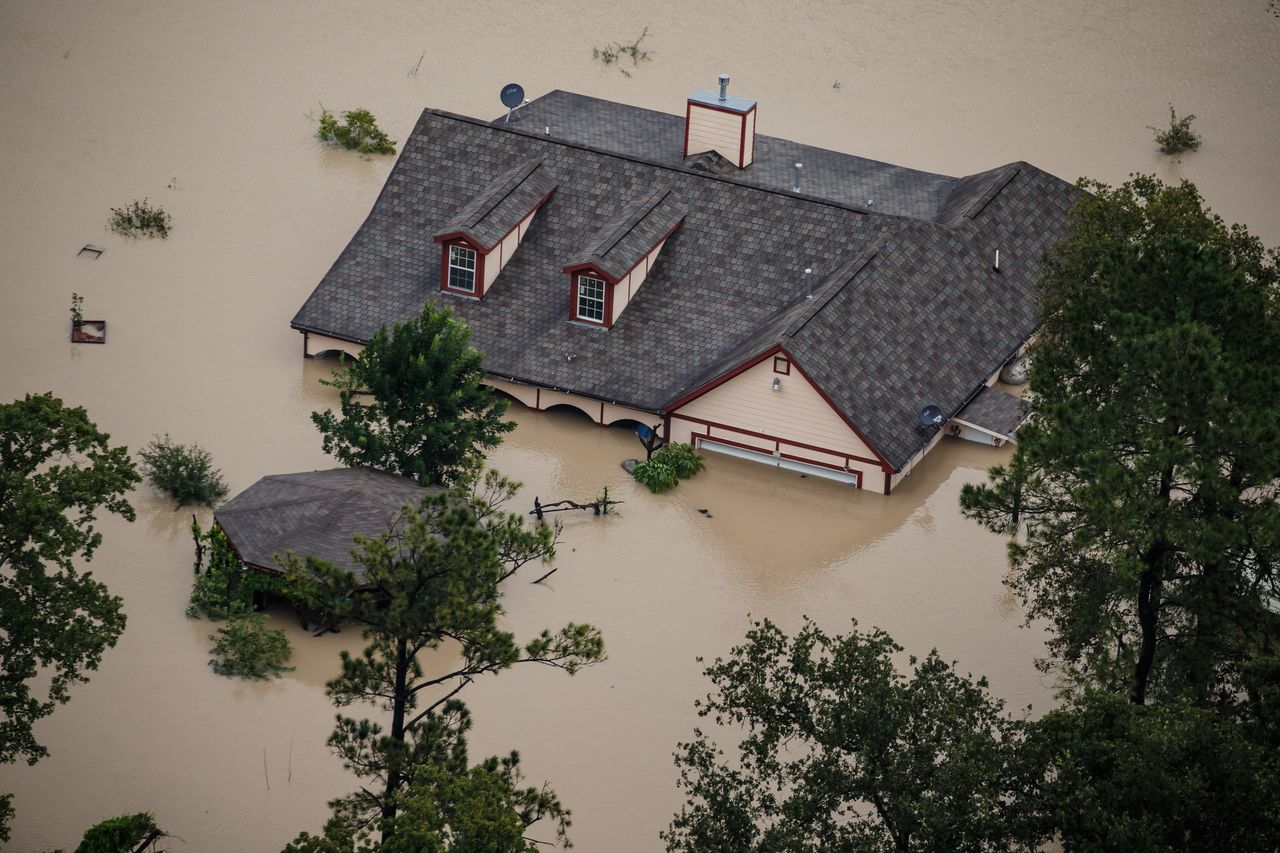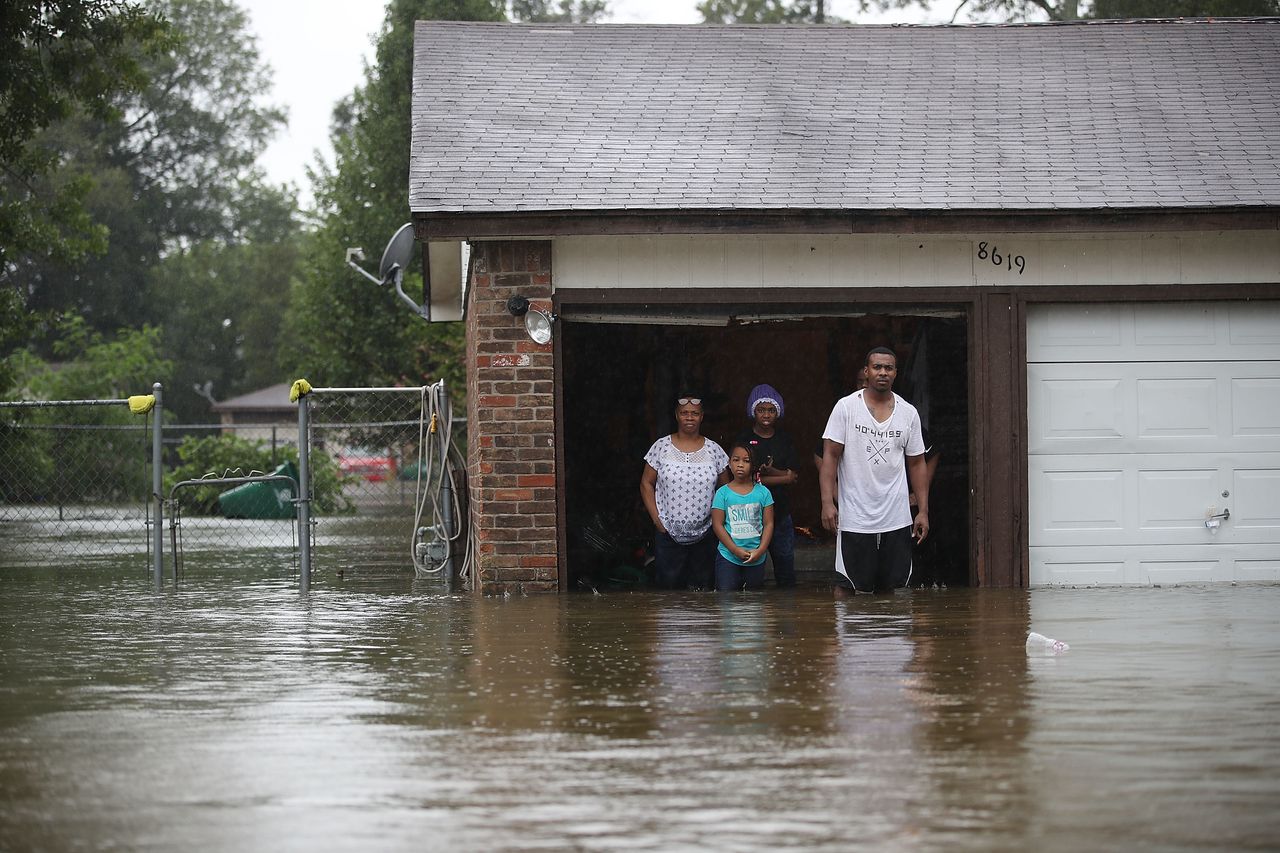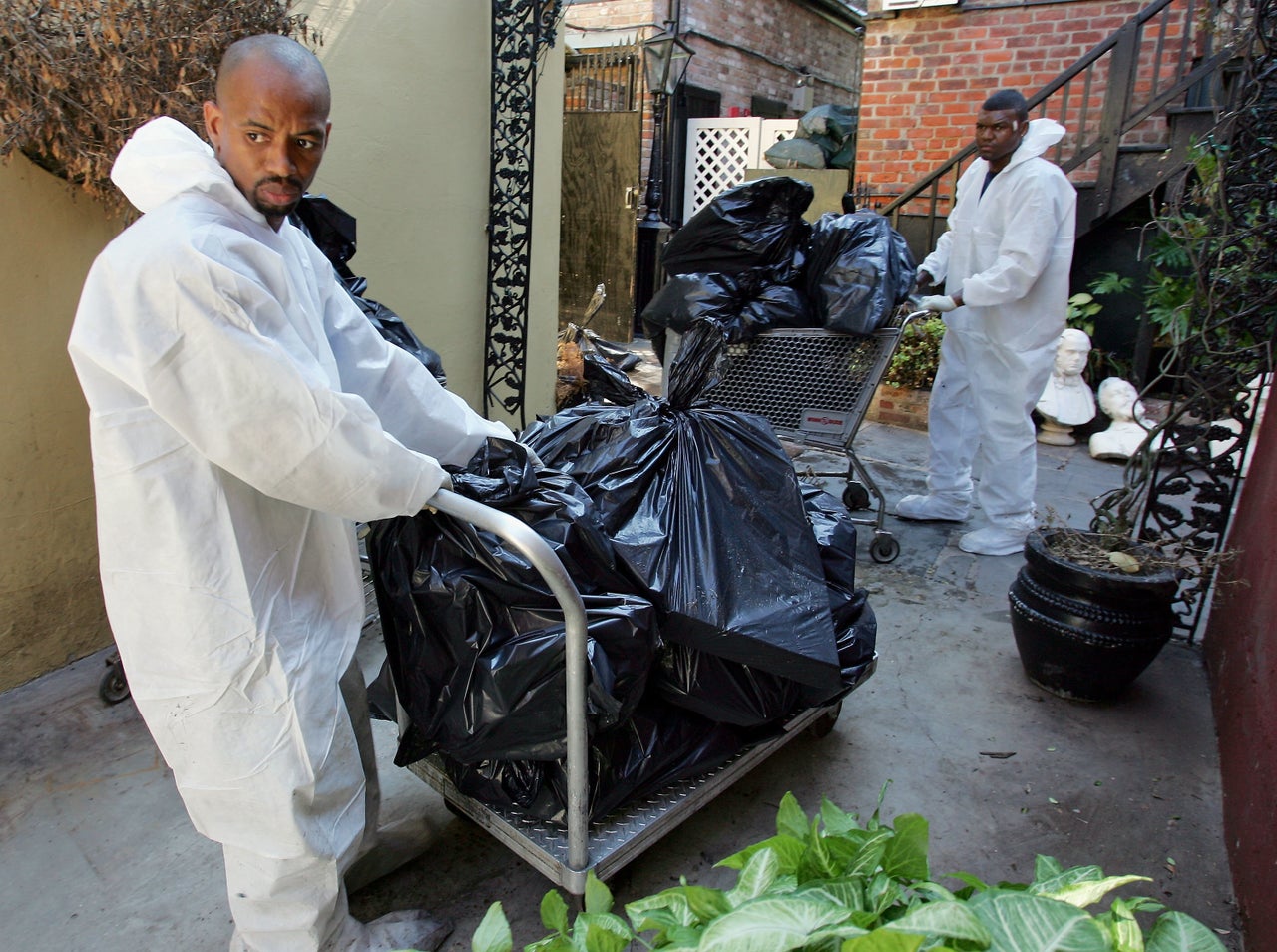Maybe you’re sitting in your living room looking out your window when it starts. Maybe you’re asleep. But you’re definitely surprised. You never thought the storm would get this bad.
You carry on with your evening, keeping one eye out the window and the other on the news. Then your cellphone blares an alert, and you notice that the water in your backyard is a bit higher than it was before, than it’s ever been before.
Soon, water starts leaking in through the doors. You and your family rush to stop it. You grab towels, trash bags, tents, bags of cement mix — anything.

You realize you should unplug anything connected to an outlet. You trip the circuit breaker. Items on the floor get moved to the countertops. You pack up important items — heirlooms, family photos, cards from loved ones — and you put essential documents in sealed plastic bags. You probably won’t empty the fridge — the food would just spoil faster in the trash can.
Then you notice water seeping into your bedroom. That’s when it hits you — this isn’t just an ordinary big storm. You start moving mattresses into your little brother’s room. It’s the only one that hasn’t flooded yet. Once you’re finished, you sit on the mattresses and stare out the window, hoping.
But it keeps raining. The water keeps rising. Soon there are 3 inches on the floor. The water is rushing in at the front, the sides, the back. It feels like an invasion. You’re supposed to be safe in your home. But here you are helpless, overwhelmed.
Now you’re standing in 6 inches of water.

You use your phone to check the water levels of lakes, rivers and reservoirs near your home. It’s bad.
Maybe the Federal Emergency Management Agency has advised that people in your area evacuate. Snakes, alligators and other animals could swim into your home. Wet electrical boxes and downed power lines put you at risk. But your car is under water, too. Even if you could briefly start the engine, it would soon be flooded out.
So you call 911, 311, any emergency number you can think of.
Nobody answers. Or if they do, they tell you they’re overbooked and you need to wait.
Eventually, someone proposes moving to the attic. You’re not sure and you’re a little scared. But you know that if you remain downstairs, you could end up drowning.
So you start moving the mattresses, food, two pairs of pants/shirts/socks per person, important documents, candles, bottles of water, lighters and your puppy to the attic.
Like most people, you don’t realize you’d be safer on the roof, where rescuers can see you and reach you. It’s hard to escape from a flooding attic.
You start getting calls from distant loved ones asking what’s going on. You lie. You tell them it’s only a little flooding and say you’re fine because you don’t want to scare them. Most of your time in the attic is spent praying.
Time passes slowly. You look at your little brother and you can tell that he’s terrified. You try to calm him down, assure him that everything will be OK. Eventually, someone in the family tries to make a hole in the roof. If you’re lucky, before they start chopping through the ceiling, you hear voices outside.
A rescue team has found you.
You file out of the attic and down the stairs, one by one. As you reach the bottom, you shiver.
The water is freezing.

At some point — weeks, maybe months later — you get to go back home. You don’t know exactly what to expect, but you’ve seen pictures of other people’s homes after other catastrophic floods.
In fact, you can’t even open your front door. Something’s blocking it. You have to find a different way to get into the house.
Inside, there’s at least an inch of mud on the floor and the mold on the walls is chest high. You’re speechless. The windows aren’t shattered, yet it looks like someone broke in and ransacked your house. Everything has been thrown off the shelves. You find items from your basement in your kitchen. Your knife block, with the knives still in it, sits in the living room. You finally reach the front door ― it’s blocked by a bookcase so swollen with water that it collapsed in a huge pile of books and shelves.
Your landlord has already come in and removed the refrigerator full of spoiled food. On your drive home, you saw fields full of refrigerators like yours.
Your house stinks like dirty feet.

You start the cleanup. You grab industrial-sized trash bags and put on masks and hazmat suits. You haul out bags of ruined belongings. The six-foot stack in your front yard lines up with others in the neighborhood. It’s a graveyard for drowned furniture, appliances, clothes, books, toys.
Then you rip up your floors and gut the walls up to 4 feet — FEMA’s standard — as quickly as possible. If the water rose higher than 4 feet, you rip the entire wall out. You send in your flood insurance claim and wait for the FEMA adjuster to come out and assess the damage.
Sometimes, the damage is so bad that FEMA doesn’t need to send out an inspector.
If you own your home, you try to hire contractors to help rebuild. You learn that you can’t get your new kitchen cabinets hung until your new floor is laid down. The floors are back-ordered so you focus on putting in a new layer of sheetrock.
If you move fast, you can finish repairs in just under a year. If you’re lucky, your flood insurance will cover most of the tens of thousands of dollars in damage. But most people don’t have flood insurance.
In the aftermath of the storm, you can’t find many places to rent. None of the hotels in town have space. You may buy an air mattress and stay in your gutted house. You may bunk in with family before moving to a new home in a new city.
You pray it never happens again.
This story is based on interviews with Justin Forbes, whose house flooded in Baton Rouge; Amanda Prater, who lost everything when Hurricane Katrina hit New Orleans; Blanca Gonzalez, whose home flooded twice before in Houston; Eric Larsen, a research scientist of human ecology whose home has flooded twice in California; Jordan Acker, whose house flooded in Detroit; and Marlin Leal, whose home flooded during Hurricane Harvey in Houston.
Sign up for the HuffPost Must Reads newsletter. Each Sunday, we will bring you the best original reporting, long form writing and breaking news from HuffPost and around the web, plus behind-the-scenes looks at how it’s all made. Click here to sign up!
